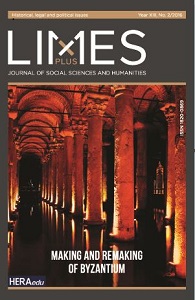The Term τρισκατάρατος in Byzantine and Serbian Medieval Literature
The Term τρισκατάρατος in Byzantine and Serbian Medieval Literature
Author(s): Dragoljub MarjanovićSubject(s): Cultural history, 6th to 12th Centuries, 13th to 14th Centuries
Published by: HESPERIAedu
Keywords: “thrice-accursed”; late antiquity; Byzantine literature; Serbia; orthodoxy; hagiography; heresy
Summary/Abstract: The starting point of this paper is the account of a council against heretics which was held by the Serbian grand zhupan Stefan Nemanja in his dominions in the late 12th century Serbia. Later, in the first half of the 13th century, Nemanja’s son and hagiographer, the first crowned king Stefan Nemanjić utilized a specific technical term “thrice-accursed” (τρισκατάρατος – трьклет) in his account of the council that was convened. Our aim is to present the levels of cultural and literary traditions which were transmitted from various Byzantine literary genres, which stem from the attic oratory as far as the 4th century B.C. (Demosthenes’ Oration against Aristogeiton), through the literary works of the rhetor Lucian the Sophist in the second century A.D., and which later entered Byzantine tradition through pseudo-Chrysostomian works, and the liturgical and historiographical texts of authors such as Romanos Melodos, George the Monk, and Constantine Manasses. We aim to present both the development in the meaning of the term thrice-accursed in its long historical path from Demosthenes to Manasses, its shift from ancient pagan to Christian semantics and thus utilization in various genres of Byzantine literature, and finally its influence on the genre of Serbian medieval hagiography, especially in the works of Stefan the First-Crowned and archbishop Danilo II in his Lives of Serbian kings and archbishops.
Journal: LIMESplus
- Issue Year: 2016
- Issue No: 2
- Page Range: 109-128
- Page Count: 20
- Language: English

